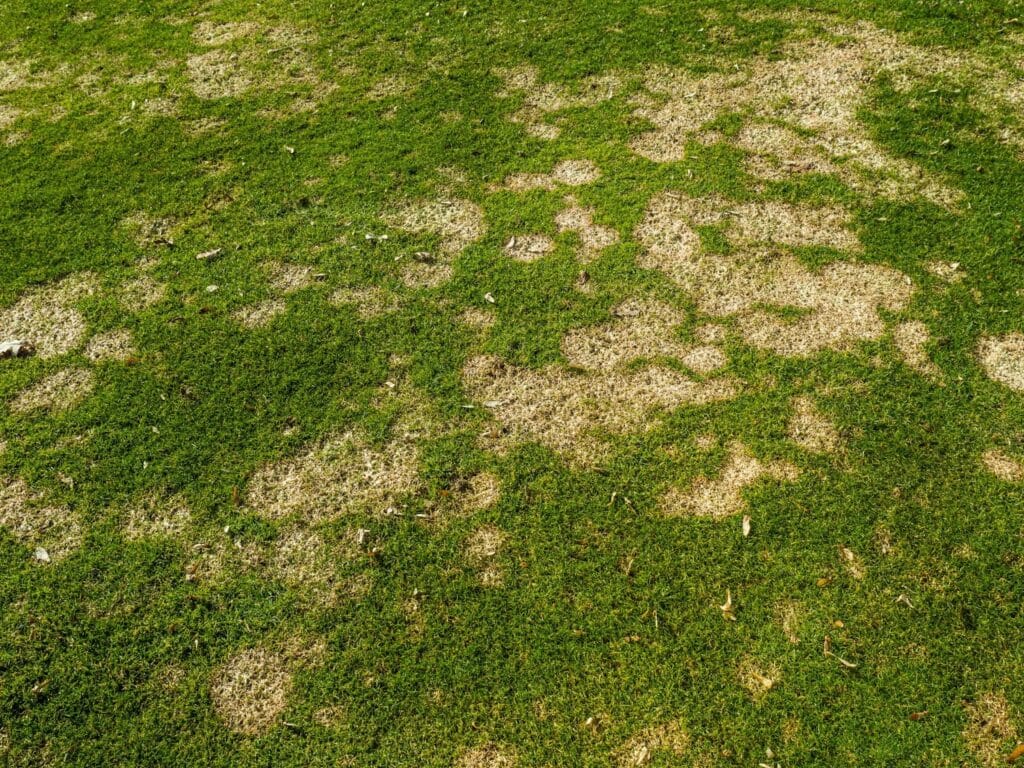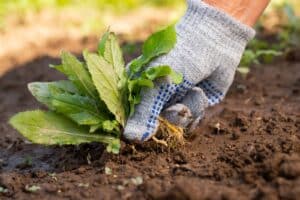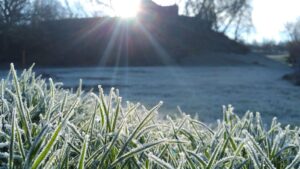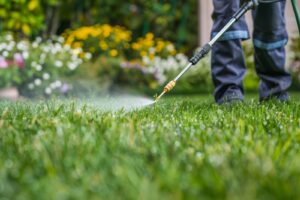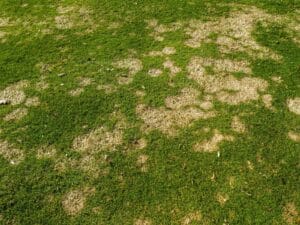Maintaining a green lawn requires attention to detail, especially when determining whether the grass is healthy or diseased. If not addressed quickly, a diseased lawn may lead to unsightly patches, discoloration, and long-term damage.
Identifying the signs of a diseased lawn early allows for timely intervention and effective lawn care strategies. This guide will help you recognize common symptoms of lawn diseases, understand their causes, and know what steps to take to restore your lawn to its lush, green glory.
Signs that your lawn might be diseased
1. Discolored patches
One of the most noticeable signs of a diseased lawn is the appearance of discolored patches. These patches range from yellow to brown and may be irregular in shape. While some discoloration might be due to environmental factors like drought or pet urine, large or spreading patches often indicate a fungal disease.
For example, a yellowish or brownish hue could point to diseases like dollar spots or brown patches. Both thrive in warm, humid conditions and will quickly spread if not treated.
2. Thinning grass
Thinning grass, where the turf becomes sparse, indicates a diseased lawn. Healthy grass grows thick and covers the soil evenly, so something is likely wrong when areas start to thin out.
Thinning may result from fungal diseases like leaf spot, which attacks the grass blades and causes them to die off, or root rot, which weakens the root system, preventing the grass from absorbing water and nutrients. Proper lawn care, such as aerating the soil and overseeding, helps combat thinning grass.
3. Wilting despite adequate watering
Wilting is a clear sign that your lawn is under stress, but if your grass wilts despite regular watering, it could be a sign of a disease affecting the roots. Root rot, which is often caused by overwatering or poorly drained soil, results in a weakened root system.
When roots are damaged, the grass struggles to take up water, leading to wilting even when the soil is moist. Addressing drainage issues and reducing watering frequency might be necessary to prevent further damage.
4. Powdery or slimy residue
If you notice a powdery or slimy residue on your grass, it could indicate a fungal infection. Powdery mildew, for example, appears as a white or gray powder on the grass blades, usually in shaded areas with poor air circulation.
On the other hand, slime molds create a slimy layer on the surface of the grass. While slime molds are usually harmless, they block sunlight and air from reaching the grass, leading to yellowing or stunted growth. Identifying these residues early helps prevent further damage to your green lawn.
5. Circular or ring patterns
Circular or ring patterns in your lawn often indicate a fungal disease. For example, fairy rings are caused by a fungus that creates dark green or dead grass rings. The fungus breaks down organic matter in the soil, releasing nutrients that cause the grass in the ring to grow more vigorously or, conversely, die off.
Similarly, necrotic ring spot creates circular patches of dead grass, often with healthy grass in the center, forming a “frog-eye” appearance. These patterns strongly indicate that your lawn is diseased and needs immediate attention.
Common causes of lawn diseases
Understanding the common causes of lawn diseases will help you effectively care for your lawn. Here are some factors that contribute to a diseased lawn:
1. Poor soil drainage
Poor soil drainage is a leading cause of many lawn diseases. Waterlogged soil creates an ideal environment for fungal pathogens to thrive, leading to diseases like root rot and red thread.
Compacted soil prevents water from draining correctly, suffocating the roots and promoting disease development. Aerating the lawn and improving soil structure helps alleviate drainage issues and prevent diseases.
2. Overwatering or underwatering
Both overwatering and underwatering will stress your lawn and make it more susceptible to diseases. Overwatering leads to excess moisture, which encourages fungal growth, while underwatering weakens the grass, making it more vulnerable to infections. Finding the right balance in your watering routine is essential for maintaining a healthy, green lawn.
3. Improper mowing practices
Improper mowing practices, such as cutting the grass too short or using dull mower blades, can damage your lawn and open the door for diseases.
Cutting the grass too short weakens it by reducing its ability to photosynthesize, while dull blades tear the grass instead of cutting it cleanly, creating wounds that pathogens may infect. Regularly sharpening your mower blades and following proper mowing height guidelines are critical steps in lawn care.
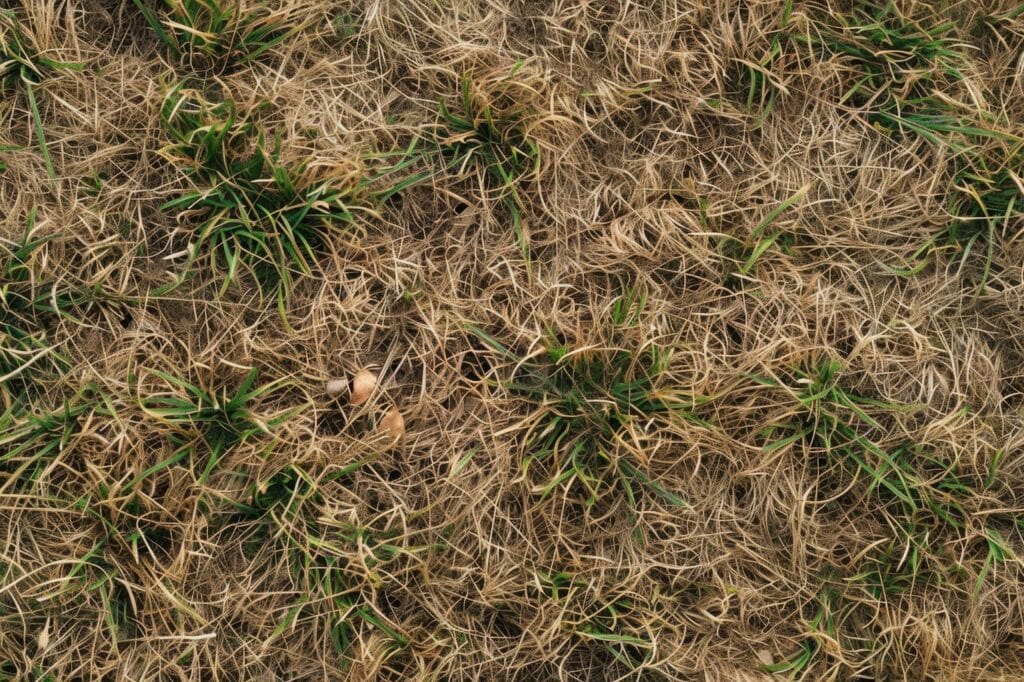
4. Lack of nutrients
A lack of essential nutrients, particularly nitrogen, can make your lawn more disease-prone. Nitrogen is vital for healthy growth and helps grass resist infections. Lawns that are nutrient-deficient often show signs of yellowing and thinning, which can lead to diseases like dollar spots. A balanced fertilization program is key to preventing nutrient-related lawn diseases.
5. Environmental stressors
Environmental stressors like extreme temperatures, drought, and heavy foot traffic may weaken your lawn and make it more susceptible to diseases. Stress reduces the grass’s natural defenses, allowing pathogens to take hold more easily. Protecting your lawn from these stressors through proper lawn care practices is essential for disease prevention.
Effective lawn care strategies to prevent diseases
Preventing a diseased lawn requires a proactive approach to lawn care. Here are some strategies to help you maintain a healthy and green lawn:
Regular mowing and proper mowing height
Regular mowing keeps your lawn healthy, but following proper mowing height guidelines is essential. Most lawns benefit from being cut at a height of 2.5 to 3.5 inches, which allows the grass to photosynthesize efficiently and develop a strong root system.
Avoid cutting more than one-third of the grass blade at a time, as this stresses the plant and increases the risk of disease.
Balanced fertilization
A balanced fertilization program gives your lawn the nutrients to stay healthy and resist diseases. Nitrogen is essential for maintaining a green lawn, but phosphorus and potassium also play crucial roles in root development and overall plant health.
Apply fertilizer according to soil test recommendations and adjust the timing based on the specific needs of your grass type.
Proper watering practices
Proper lawn watering is essential for disease prevention. Deep, infrequent watering encourages deep root growth and helps your lawn withstand drought conditions.
Water early in the morning to allow the grass to dry before evening, reducing the risk of fungal infections. Avoid overwatering, as it can lead to waterlogged soil and create an environment conducive to disease development.
Aeration and dethatching
Aeration and dethatching are important lawn care practices that improve soil structure and promote healthy root growth. Aeration involves removing small plugs of soil to relieve compaction and improve air and water circulation.
Dethatching removes the dead grass and organic matter layer that builds up on the soil surface, potentially harboring diseases. Regularly performing these practices helps keep your lawn healthy and disease-free.
Pest control
Pests such as grubs, chinch bugs, and armyworms weaken lawns and make them more susceptible to diseases. Implementing an integrated pest management (IPM) program helps control these pests and reduces the risk of secondary infections.
IPM involves monitoring pest populations, using targeted treatments when necessary, and promoting natural predators to keep pest numbers in check.
Diagnosing and treating lawn diseases
If you suspect your lawn is diseased, an accurate diagnosis is the first step toward effective treatment. Here are some steps to diagnose and treat a diseased lawn:
Identify the symptoms
Carefully observe your lawn’s symptoms, such as discoloration, thinning, or powdery residues. Note the pattern and location of the symptoms, as this provides clues to the specific disease affecting your lawn.
Research common lawn diseases
Familiarize yourself with common lawn diseases in your area. Researching symptoms and causes can help you narrow the possibilities and identify the disease. For example, if you notice circular patches of dead grass, it could be a brown patch or necrotic ring spot.
Consult a lawn care professional
Consulting a lawn care professional can provide valuable insights if you’re unsure about the diagnosis. Professionals have experience identifying and treating various lawn diseases and will recommend appropriate treatments to restore your lawn’s health.
Monitor and adjust lawn care practices
After treating the disease, continue to monitor your lawn for signs of improvement or recurrence. Adjust your lawn care practices to address any underlying issues contributing to the disease. This may involve changing your watering routine, adjusting your fertilization program, or improving soil drainage.
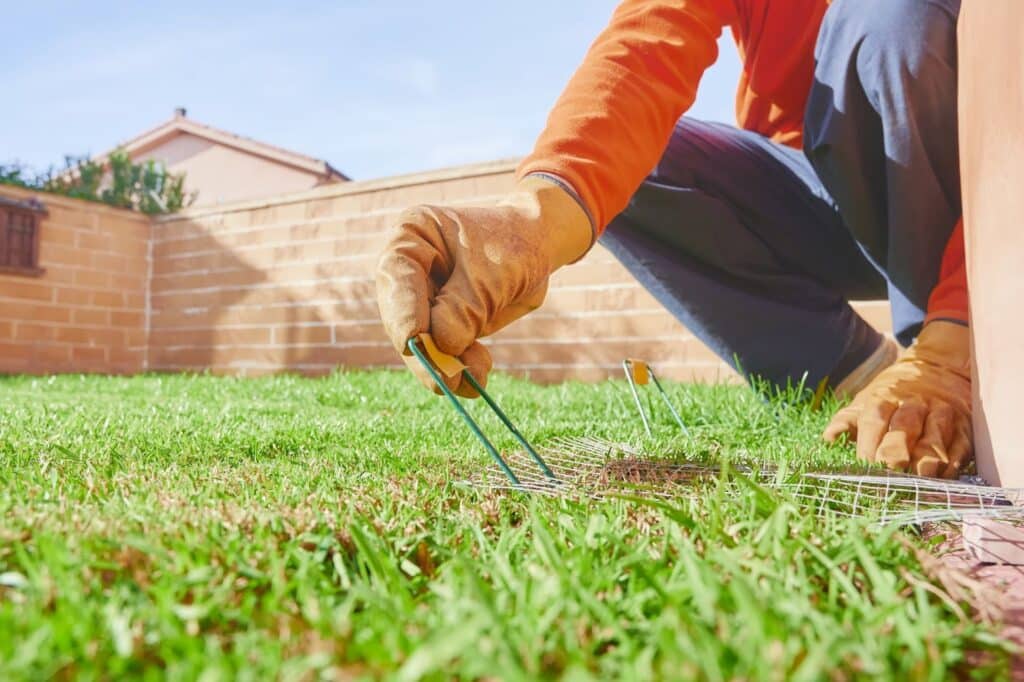
Summit Lawn & Pest Control
Are you dealing with pest problems in Orem, Utah? Don’t wait — contact Summit Lawn & Pest Control today. With a decade of experience serving Orem and the broader Utah County area, our team is dedicated to quickly and effectively eliminating your pest issues.
Armed with the necessary expertise, tools, and commitment, we transform your home into a pest-free sanctuary, ensuring your safety and peace of mind. Don’t let pests take over your space — call 801-473-9926 for a free estimate.
For exceptional lawn services and pest control solutions, trust Summit Lawn & Pest Control. Reach out now to secure a pest-free environment for your home!


